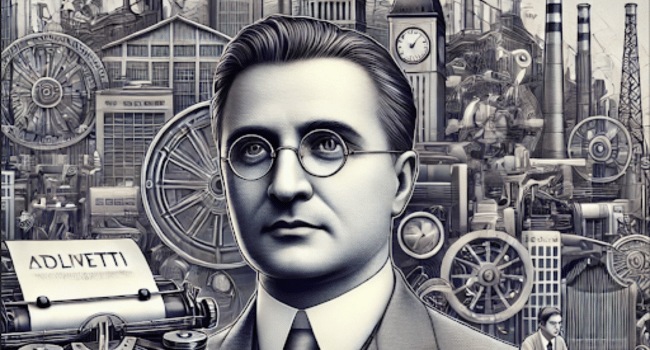
Olivetti: The Italian Father of Home Computers
When discussing the evolution of personal computing, names like IBM and Apple often dominate the conversation. However, a lesser-known yet pivotal player in this history is Olivetti, the Italian company that laid the groundwork for the modern home computer. Founded in 1908 in Ivrea by Camillo Olivetti, this company began as a typewriter manufacturer but eventually became a trailblazer in the world of computing. With its innovative approach to design and technology, Olivetti became a pioneer that shaped the way we think about personal and home computers.
The Early Vision: Merging Technology and Design
Olivetti’s journey into computing began in the mid-20th century under the leadership of Adriano Olivetti, Camillo’s son. Adriano envisioned technology not just as a tool for productivity but as an enabler of human progress. This philosophy permeated the company’s ethos, influencing not only their technological advancements but also their emphasis on aesthetic and user-friendly design.
In 1959, Olivetti introduced the Elea 9003, the first Italian-made electronic computer. Though not a home computer, the Elea 9003 showcased Olivetti’s ability to innovate in the field of computing. Designed by engineer Mario Tchou and architect Ettore Sottsass, it was a perfect blend of technical prowess and sleek design—a hallmark of Olivetti products.
The Breakthrough: Olivetti Programma 101
Olivetti’s most iconic contribution to personal computing came in 1964 with the unveiling of the Programma 101 (P101), widely regarded as the first desktop computer. Compact, versatile, and affordable compared to its contemporaries, the P101 was designed for non- specialists, bringing computing power into offices and schools. It featured a keyboard, magnetic card storage, and a built-in printer, all in a design that could sit comfortably on a desk.
The P101 was revolutionary in its simplicity and accessibility. It was introduced at the New York World’s Fair in 1965, where it garnered significant attention. NASA even used it for calculations during the Apollo space missions. The P101’s influence was so profound that it earned the nickname “the first personal computer,” years before the term became mainstream.
Design and Innovation: Hallmarks of Olivetti
One of Olivetti’s distinguishing characteristics was its commitment to integrating design with technology. Adriano Olivetti believed that good design was as important as functionality, a belief that influenced the company’s collaboration with leading architects and designers. Ettore Sottsass, a key figure in modern design, played a crucial role in shaping the aesthetic appeal of Olivetti products, including the P101 and the Valentine typewriter.
This emphasis on design extended beyond products to the workplace itself. The Olivetti headquarters in Ivrea became a model for corporate architecture and employee-centric planning. In 2018, the town of Ivrea was designated a UNESCO World Heritage Site for its innovative industrial design.
Challenges and Legacy
Despite its groundbreaking contributions, Olivetti struggled to maintain its momentum in the rapidly evolving computer industry. Financial difficulties in the 1970s and increased competition from American and Japanese companies eventually led to a decline in its market position. By the 1980s, Olivetti had shifted its focus away from computing, though it remained a significant player in telecommunications and office equipment.
However, Olivetti’s legacy endures. The company’s pioneering work on the P101 laid the foundation for the personal computing revolution. Its emphasis on design continues to inspire, demonstrating that technology can be beautiful as well as functional.
Conclusion
Olivetti’s story is a testament to the power of vision, innovation, and design. As the Italian father of home computers, Olivetti bridged the gap between industrial machines and personal technology, making computing accessible to everyday users. While its name might not be as ubiquitous as some of its competitors, Olivetti’s influence on the evolution of personal computing is undeniable.
In a world increasingly dominated by technology, the story of Olivetti serves as a reminder of the importance of blending human-centered design with cutting-edge innovation. This Italian pioneer continues to be a symbol of creativity and technological excellence, deserving of its place in the history of computing.




